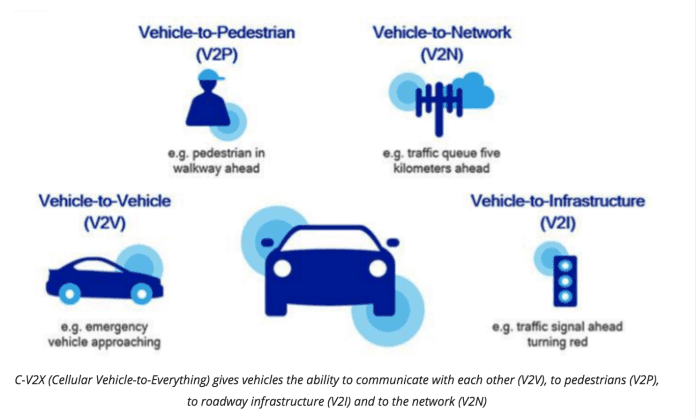The 90-day public comment period is ongoing for a proposed U.S. Department of Transportation mandate that would require automakers to include vehicle-to-vehicle (V2V) communications in all models by 2020.
According to policymakers, the proposed rule is intended to harness technology to advance crash avoidance systems and make America’s roadways safer for drivers.
“We are carrying the ball as far as we can to realize the potential of transportation technology to save lives,” said U.S. Transportation Secretary Anthony Foxx. “This long promised V2V rule is the next step in that progression. Once deployed, V2V will provide 360-degree situational awareness on the road and will help us enhance vehicle safety.”
V2V uses dedicated short-range communications (DSRC) to allow vehicles to communicate and share data points like location, speed, direction and braking. Based on the information, in-car systems can push a warning to the driver to help avoid a crash.
According to the National Highway Traffic Safety Administration, a part of the DoT, describes DSRC as two-way wireless communication with a range of approximately 300 meters; DSRC operates in 75 megahertz of the 5.9 GHz band, which was dedicated by the Federal Communications Commission for so-called Intelligent Transportations Systems.
Avinash Salelkar, head of the Manufacturing Business Unit at Syntel, “Cars are getting smarter every day. Many new vehicles are already equipped with active systems that act in the event of an imminent collision. However, in order for tomorrow’s V2V technology to improve road safety, it is essential that it integrates with active systems that can steer away and brake.”
Salelkar continued: “The benefits of IoT-enabled cars include real-time monitoring of vehicle health, the ability to provide predictive maintenance reminders, and establishing a feedback loop where vehicle performance data is sent back to manufacturers to make future models more reliable,” said Salelkar. “At this point, it appears likely that the V2V and IoT approaches will work separately. Looking ahead, the greater challenge that I foresee is how the current vehicle population is addressed. In a scenario with a mix of transmitting and non-transmitting vehicles, the non-transmitting vehicles would be ‘invisible’ in certain respects to V2V-equipped vehicles,” he said.
Government officials are also looking at guidance for vehicle-to-infrastructure (V2I) communications, which would connect vehicles to smart roadway infrastructure like traffic lights, stop signs or work zones. According to NHTSA, V2V and V2I “could eliminate or mitigate the severity of up to 80% of non-impaired crashes.”
The big picture here is cellular-based vehicle-to-everything communications, or C-V2X, which includes V2V, V2I and vehicle-to-pedestrian and vehicle-to-network links.
Maged Zaki, director of technical marketing for Qualcomm, described the move from LTE to 5G as a “technology evolution to accommodate ever-expanding safety requirements and use cases. The path to 5G will deliver this evolution starting with the C-V2X part of 3GPP release 14 specifications.”

